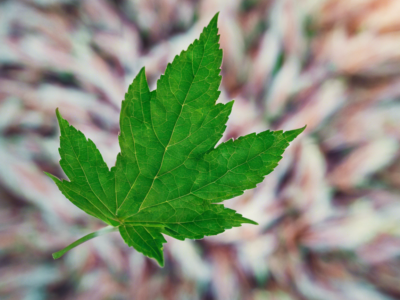Nestled atop the Nilachal Hill in the Western part of Guwahati in Assam, India, lies the Kamakhya Devi Temple – a sacred site steeped in mystique, reverence, and ancient rituals. This temple, dedicated to the Mother Goddess Kamakhya, is a significant pilgrimage destination for devotees seeking blessings for fertility, love, and prosperity. Let’s delve into the mystical world of the Kamakhya Devi Temple and unravel the traditions, legends, and spiritual significance associated with this revered abode.
History and Legend of Kamakhya Devi Temple
The history of the Kamakhya Devi Temple dates back to ancient times, with mentions in various Hindu scriptures and texts. Legend has it that the temple is one of the 51 Shakti Peethas, where the reproductive organ of the Goddess Sati fell after Lord Shiva danced in a cosmic frenzy carrying her charred corpse. The Kamakhya Devi Temple symbolizes the powerful feminine energy of creation and is revered as a center of tantric worship.
Architectural Marvels of the Temple
The Kamakhya Devi Temple boasts a unique architecture that blends Hindu and local Assamese styles. The shikhara of the temple is reminiscent of traditional Hindu temples, while the mandapa and the garbhagriha showcase Assamese influences with their sloping roofs and intricate carvings. The inner sanctum houses the yoni-shaped stone, representing the Goddess’s reproductive organ, which is revered as the primary deity.
Rituals and Festivals
The Kamakhya Devi Temple is renowned for its elaborate rituals and festivals that attract devotees from far and wide. The Ambubachi Mela, held annually during the monsoon season, is a significant event where the Goddess is believed to undergo her menstrual cycle. The temple remains closed for three days during this time, and devotees seek blessings for fertility and vitality. Other festivals like Durga Puja and Manasha Puja are also celebrated with great fervor at the temple.
Significance of Kamakhya Devi Temple
The Kamakhya Devi Temple holds immense significance in Hindu mythology and tantric practices. The Goddess Kamakhya is revered as the granter of desires and the bestower of fertility. Devotees visit the temple seeking blessings for marital harmony, progeny, and success in endeavors. The tantric practices associated with the temple also draw seekers interested in esoteric knowledge and spiritual enlightenment.
Mystical Beliefs and Practices
The Kamakhya Devi Temple is shrouded in mystical beliefs and practices that add to its enigmatic allure. Tantric rituals and sacrifices are performed by practitioners seeking divine blessings and supernatural powers. The famous “Kamakhya Sindoor,” a red vermilion powder believed to be the Goddess’s menstrual blood, is considered highly potent and is distributed as prasad to devotees.
Legends and Folklore
Several legends and folklore surround the Kamakhya Devi Temple, adding to its mystical aura. One popular belief is that the temple priests use underground water channels to keep the stone representing the Goddess’s yoni moist, symbolizing her eternal fertility. Stories of Tantric Sadhus meditating in the caves surrounding the temple and receiving divine revelations further enhance the temple’s mystical reputation.
Visiting the Kamakhya Devi Temple
For devotees and spiritual seekers planning a visit to the Kamakhya Devi Temple, it is essential to respect the sacredness of the place and adhere to traditional customs. The temple complex offers panoramic views of the Brahmaputra River and the surrounding hills, adding to the spiritual ambiance. It is advisable to check the temple timings and plan the visit during auspicious occasions or festivals to experience the vibrancy and devotion of the devotees.
Preservation and Conservation Efforts
As a site of immense historical and cultural significance, the Kamakhya Devi Temple is under continuous preservation and conservation efforts. The authorities strive to maintain the architectural integrity of the temple complex while ensuring the safety and comfort of the visitors. Initiatives to promote sustainable tourism and raise awareness about the temple’s heritage value are also in place to protect this sacred site for future generations.
In conclusion, the Kamakhya Devi Temple stands as a timeless symbol of divine femininity, spiritual power, and mystical allure. Its rich history, architectural grandeur, and sacred traditions make it a must-visit destination for those seeking a profound spiritual experience. The temple’s enigmatic charm continues to captivate devotees and visitors alike, drawing them into the mystical realm of ancient rituals and transcendent worship.
FAQs
1. What is the best time to visit the Kamakhya Devi Temple?
The best time to visit the Kamakhya Devi Temple is during the Ambubachi Mela, held annually in June-July, when the temple premises are vibrant with rituals and festivities.
2. Are there any specific dress codes to be followed while visiting the temple?
Visitors are advised to dress modestly and respectfully while visiting the temple, avoiding revealing or inappropriate clothing.
3. Can non-Hindus visit the Kamakhya Devi Temple?
Yes, the Kamakhya Devi Temple welcomes visitors of all faiths and backgrounds to experience its spiritual ambiance and sacred rituals.
4. Is photography allowed inside the temple complex?
Photography may be restricted in certain areas of the temple complex to respect the sanctity of the place. Visitors are advised to inquire about specific guidelines before clicking photographs.
5. Are there accommodation options near the Kamakhya Devi Temple for overnight stays?
There are several hotels and guesthouses available in Guwahati city, located near the Kamakhya Devi Temple, offering accommodation options for overnight stays. It is advisable to book in advance, especially during peak seasons or festivals.
6. What are the must-see attractions near the Kamakhya Devi Temple?
Visitors can explore other nearby attractions like Umananda Island, Assam State Museum, and Navagraha Temple to enhance their spiritual journey and cultural experience in Guwahati.
7. Are there any specific offerings or rituals that can be performed at the Kamakhya Devi Temple for special prayers?
Devotees can offer items like flowers, vermillion, sweets, and coins to the Goddess as part of their prayers and seek blessings for specific intentions or desires.
8. Is there a specific protocol to be followed for participating in temple rituals or pujas?
Visitors interested in participating in temple rituals or pujas are advised to seek guidance from the temple priests regarding the procedures, timings, and significance of the ceremonies.
9. How can one reach the Kamakhya Devi Temple from Guwahati city?
The Kamakhya Devi Temple is easily accessible from Guwahati city by road, with various modes of transportation like taxis, buses, and auto-rickshaws available for commuting to the temple premises.
10. What are the significance and symbolism of the yoni-shaped stone in the inner sanctum of the Kamakhya Devi Temple?
The yoni-shaped stone represents the divine feminine energy of the Goddess Kamakhya and symbolizes creation, fertility, and rebirth in Hindu mythology and tantric beliefs. Devotees revere the stone as a potent source of blessings and spiritual power.










